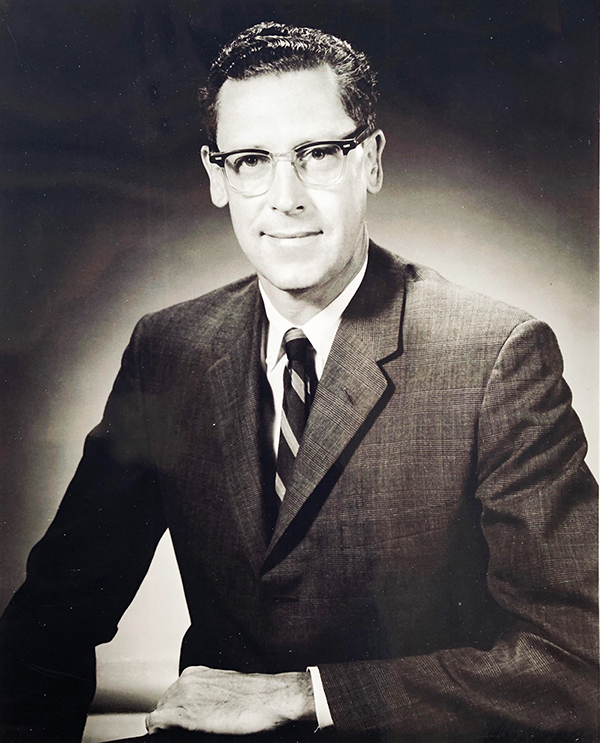George Hoagland Vineyard (1920 – 1987) was born in St. Joseph. Vineyard accomplished so much that I could not begin to fit all onto this one biography page. He studied physics at MIT. After receiving his B.S. degree from that institution in 1941, he earned his Ph.D there in 1943, with a thesis on the behavior of space charge in the cavity magnetron. From 1943 to 1946, he was on the staff of the MIT Radiation Laboratory, working on microwave electronics and radar.
In 1946, Vineyard joined the physics faculty of the University of Missouri – Columbia, becoming a professor of physics in 1952. His research interests were in the theory of liquids, the determination of structures of liquids and solids by scattering of various particles, and general state physics. `
Vineyard joined Brookhaven National Laboratory and became a Senior Physicist in 1960. He held several positions within the laboratory and became Director in 1973. In 1982 he left the Directorship to return to full time research there.
At Brookhaven, Vineyard researched several areas; the use of neutrons to determine the structure of matter; the kinetics of order-disorder transitions; the theory of diffusion; the theory of magnetism and radiation damage in solids.
Over the years, Vineyard was involved in science far beyond his research. He was a member of numerous advisory committees for the National Science Foundation, National Research Council, American Physical Society and several universities as well as consultant to various laboratories and to industry. He was the author to many publications, a Fellow of the American Physical Society, the American Academy of Arts and Sciences, the American Association for the Advancement of Science and Polytechnic Institute of New York.
Vineyard’s profound and distinguished career spanned a full half of century. That lead to, and lives on in the scientific progress for which his research paved the way, and in the hearts and minds of his students and colleagues who, with him and because of him, share in the excitement and wonders of new scientific horizons. He was a national leader in the physics community. At the time of his death he was president elect of the 37,000 member American Physical Society and was to have taken office in January 1988.

